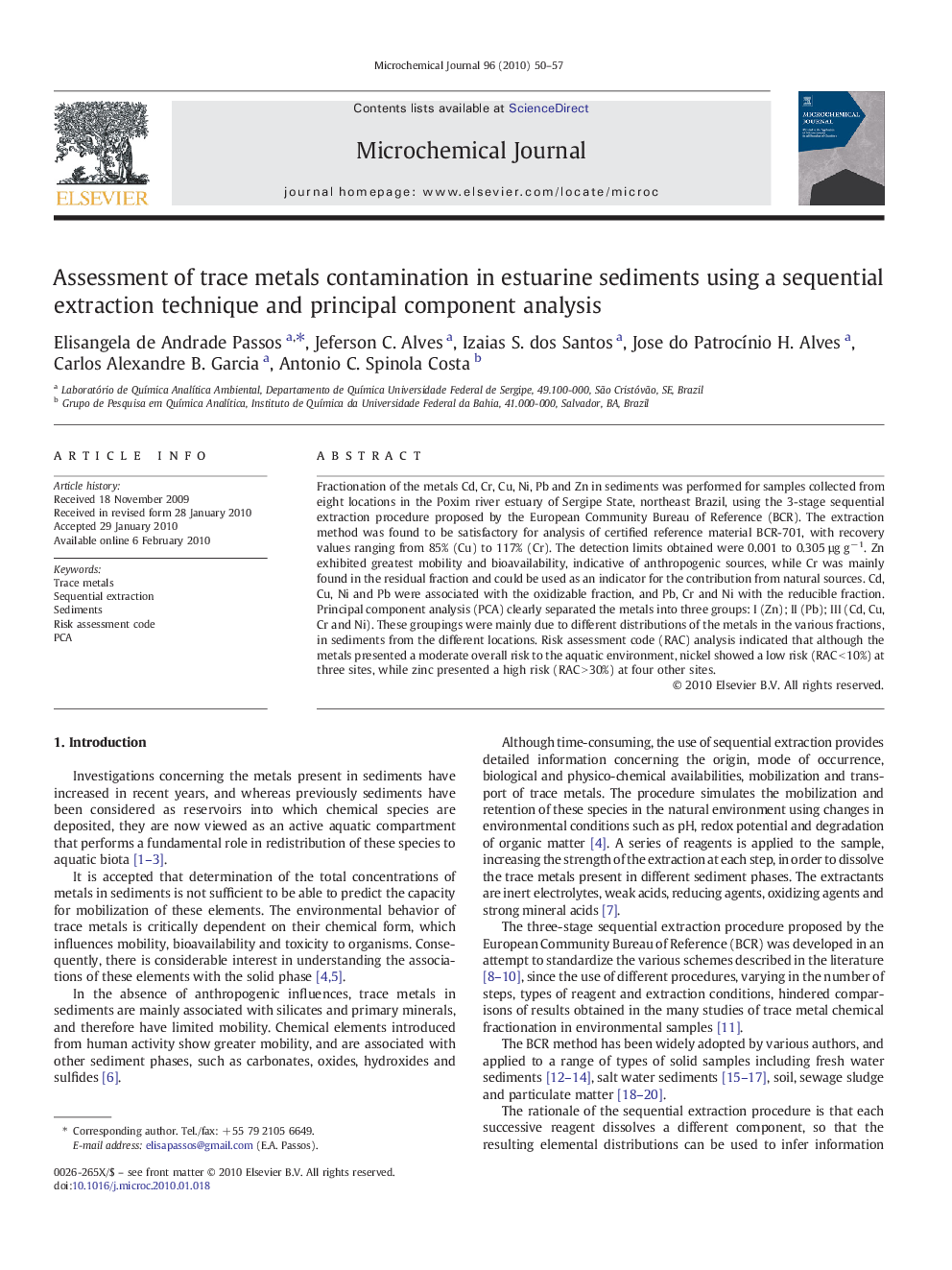| Article ID | Journal | Published Year | Pages | File Type |
|---|---|---|---|---|
| 1227824 | Microchemical Journal | 2010 | 8 Pages |
Fractionation of the metals Cd, Cr, Cu, Ni, Pb and Zn in sediments was performed for samples collected from eight locations in the Poxim river estuary of Sergipe State, northeast Brazil, using the 3-stage sequential extraction procedure proposed by the European Community Bureau of Reference (BCR). The extraction method was found to be satisfactory for analysis of certified reference material BCR-701, with recovery values ranging from 85% (Cu) to 117% (Cr). The detection limits obtained were 0.001 to 0.305 µg g− 1. Zn exhibited greatest mobility and bioavailability, indicative of anthropogenic sources, while Cr was mainly found in the residual fraction and could be used as an indicator for the contribution from natural sources. Cd, Cu, Ni and Pb were associated with the oxidizable fraction, and Pb, Cr and Ni with the reducible fraction. Principal component analysis (PCA) clearly separated the metals into three groups: I (Zn); II (Pb); III (Cd, Cu, Cr and Ni). These groupings were mainly due to different distributions of the metals in the various fractions, in sediments from the different locations. Risk assessment code (RAC) analysis indicated that although the metals presented a moderate overall risk to the aquatic environment, nickel showed a low risk (RAC < 10%) at three sites, while zinc presented a high risk (RAC > 30%) at four other sites.
